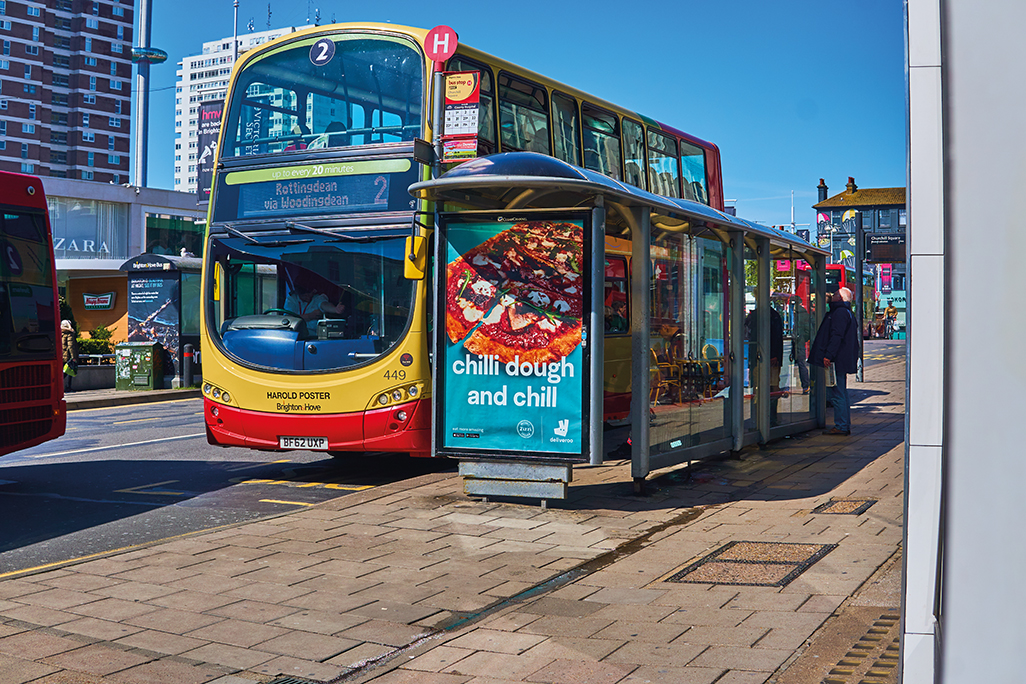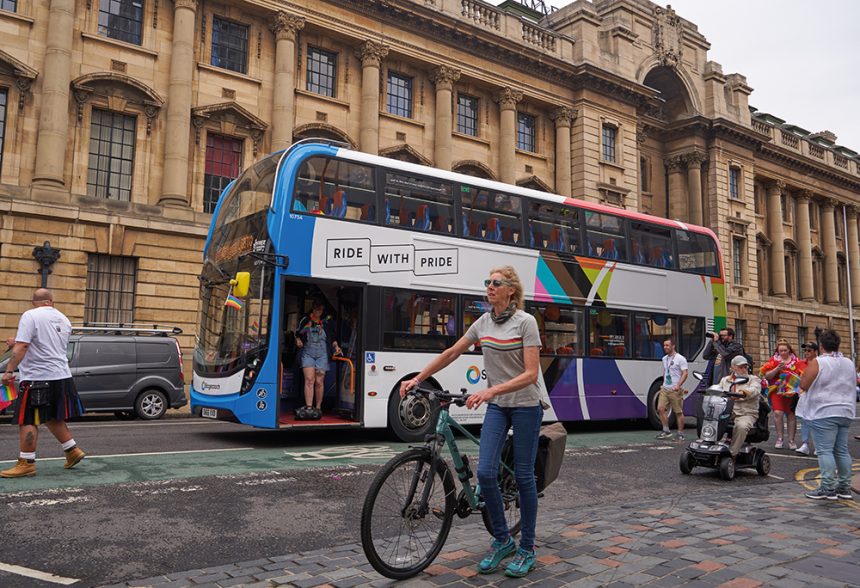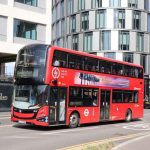When Paul Walker of Portsmouth City Council presented the city’s bus strategy to routeone in July, one of its aims was to join the country’s top-performing regions for bus trip rates per capita.
Its current rate of 52.5 journeys per head (according to recent Department for Transport (DfT) data) lags behind some of its aspirational peers, but successful cities share certain characteristics that put growth within reach. They include long-term partnerships between local authorities and operators, joint capital investment in infrastructure and vehicles, fare innovation and targeted ticketing, and a strong sense of civic identity, with political leadership that promotes buses as a public good.
A willingness to experiment and take a dynamic approach to bus service delivery has also been a key to post-COVID growth in the top performing regions. Those above the England average (outside London) were led by Brighton and Hove, followed by Nottingham, Reading, Tyne and Wear, Bristol, the West Midlands, Hull, Bournemouth and Southampton.
routeone reached out to representatives from these highest performing regions to understand how they are restoring and growing patronage, and if they are still on track to meet targets.

Brighton and Hove
Brighton and Hove remains England’s standout performer with the highest bus trip rate outside London, and a long-established culture of bus use.
Nick Hill, Commercial Director, Brighton and Hove Buses says patronage is at around 93% of 2019 levels at present. DfT statistics show bus use in the city grew from 40.8 million journeys in 2009/10 to 49.9 million in 2019. In 2023/24 it was 41.1million but Brighton and Hove Buses expects the 2024/25 number to show significant growth on this.
“Bus use per head of population was 146.8 in 2023/24 and is highest in England outside London, but again we expect the 2024/25 number to show significant growth on this,” Nick adds. “The 2019 figure was 177.4. We were seeing nearly 10% year-on-year growth in late 2024 but this reduced in 2025 following the change to the fare cap and is currently 1-2%.”
The city’s long-running Quality Bus Partnership with the council, extensive bus priority enforcement, long operating hours and widespread contactless adoption are credited with driving that performance. Post-COVID measures have included the new cross-city 1X service, new Christmas Day commercial operations, capped fares, targeted marketing, and a focus on punctuality.
Brighton and Hove’s Bus Service Improvement Plan (BSIP) targets a 15% increase on pre-COVID use levels by 2030. Nick is confident that the partnership approach of the BSIP and Enhanced Partnership (EP) is helping to jointly deliver schemes that are targeted at that growth, but structural changes that resulted in reduced travel remains a challenge. Also risking growth is the reduction in students at the two main universities in the city. But the operator is using this as an opportunity to engage with students to reshape services to better suit new demands.
“There is a strong culture of bus use locally with very positive support for buses from all political parties,” Nick adds. “Sussex and Brighton are in the first phase of devolution with Brighton and Hove, East Sussex and West Sussex’s new combined authority being created with an elected mayor in 2026. This will bring about major change locally.”
Southampton
In Southampton, the number of bus trips per head of population was 81.2 in 2023/24, the fourth highest outside of London, slightly down from 81.3 in 2019/20, which was then seventh highest.
Southampton City Council’s records show 22.2 million trips taken in 2023/25, a 6% increase on 2023/24 levels, and a 9.4% increase on 2019/20 levels. While not yet at pre-pandemic levels, the number of concessionary fare trips is also growing with 3.16 million in 2024/25, a 6% increase on 2023/24 levels at 2.98 million trips.
The city says recovery was driven by competition between Go South Coast and First Bus from 2019 until First’s exit in 2023, with lower fares on corridors in comparison to other towns and cities. There was also early introduction of passenger-friendly features such as contactless payments, USB charging, next-stop displays and wi-fi from 2014. Southampton also has one of the youngest fleets in the country. More recently, the city’s BSIP has delivered infrastructure such as new bus lanes, a city-centre interchange at Albion Place, and initiatives such as a £1 evening fare, and group discounts.
“Southampton City Council’s strong partnership with our bus operators and Hampshire County Council has enabled our bus network to go from strength to strength,” says Councillor Christie Lambert, Cabinet Member for Transport. “The significant investment from Bluestar, First Solent, the council and DfT all underline the ambitious steps that the council and its partners are taking to make buses a more attractive choice for people, built on reliability, sustainability and value for money.”
The BSIP has targets for growing bus use in the city to 24.3 million trips per year by 2030 with an ambitious stretch target of 28.9 million trips over same period. But to deliver on its aims the council is asking for a step change in funding levels, especially regarding its aspirations for infrastructure, including delivery of a mass transit system. Plans for such a system set out in its BSIP aim to address congestion caused by limited city access from its coastal location.

Bournemouth, Christchurch and Poole
Now consolidated under Go South Coast’s Morebus brand, the Bournemouth, Christchurch and Poole (BCP) region has achieved 97% of its pre-COVID patronage and is growing in key markets. It has set targets as part of its EP to grow passenger numbers of 3% per year to 2026/27.
“Although patronage is roughly the same, like everywhere else in the UK our town centres are seeing decline, giving people less reasons to use [buses],” a spokesperson says. “Positively we can report our ENCTS journeys are up by 4.8% in the first quarter of 2025/26 compared to 2024/25.”
Pre-COVID, the area was characterised by intense competition between Yellow Buses and Morebus. With Yellow Buses no longer in the market, the single-operator model underpinned by a voluntary quality partnership has allowed for more straightforward coordination.
BCP Council received first-round BSIP funding which was used to invest in passenger growth, targeted fares initiatives for commuters, younger people and evening bus travel to support the nighttime economy. Other post-pandemic measures have included £13.5m investment in 49 new Euro VI buses, enhanced marketing, and targeted fare deals for commuters and evening travellers.
But infrastructure remains a challenge, particularly given the region’s coastal and river geography. As is delivering bus priority that walks the fine line between falling into “anti-car” rhetoric, according to a spokesperson.
“By working with our partners at Go South Coast, we’ve seen ridership steadily increase,” the council adds. “It is now the predominant operator in BCP offering a high-quality service with well-trained drivers, printed and digital publicity and minimal lost mileage. The main bus priority scheme – from Bournemouth railway station to the town centre — will be delivered in the next 12 months. It’s anticipated that when this is realised, bus passenger growth will accelerate.”

West of England
In the West of England Combined Authority area, recovery has been spurred by political will, targeted free fares, and capital investment.
A spokesperson tells routeone that bus patronage is close to pre-pandemic levels and that a free travel for under-16s scheme introduced this summer saw 143,000 trips taken in its first week alone.
The region secured £752 million in the June Spending Review for transport improvements and £150 million through First Bus and the government for depot electrification and a 250-vehicle green fleet. First Bus’ electrification programme is already under way.
A new bus plan and “transport vision” are due in the autumn. “It’s a priority for the new Mayor to deliver the better buses that people expect and deserve,” the authority adds.
Nottingham
Once a byword for success, Nottingham has experienced a more mixed recovery, although its fundamentals remain strong.
Bus Patronage at the end of 2024/25 was at 92% of 2019 levels. Its retention of a ‘bus culture’ combined with a political leadership that has a stake in municipally owned Nottingham City Transport (NCT) has created an ecosystem where buses and other forms of sustainable transport still thrive.
Across bus and tram in Nottingham (united under an integrated urban public transport network) at the end of 2024/25, growth continues, albeit steadily. That was reflected in bus alone which from 2022/23 had been seeing a sustained recovery, but early indications from 2025/26 suggest that that growth may have plateaued and a small amount of decline is now be in play.
Richard Wellings, Principal Public Transport Officer for Nottingham City Council, attributes the jump to a £3 national fare cap from January for some of that impact on patronage.
Richard says the presence of a strong local EP and outstanding independent bus operators like Trentbarton and NCT have been key to high historic bus use, though. Good ticketing integration with trams have helped create a coherent, legible local network and coupled to
strong commitments to bus priority, high frequency services through the day and at evening and weekends, and comprehensive investment in real-time information at stops and interchanges have formed wider efforts to improve passenger experience. The city also benefits from a high student population and low car ownership and has been proactive with its Workplace Parking Levy to constrain car use further.
Post-pandemic, short term investment has come via the local BSIP in bus service support and £3.2 million of route enhancement over the past four years. There have also been a range of ticketing initiatives, and capital investment in priority that adds to the existing 30km (18.6 mile) network. Other regeneration projects are starting to bear fruit for the Greater Nottingham bus network.
The city BSIP targets a return to 2019 levels of patronage by 2030/31. “But the ambition to get there quicker exists, and the dawn of the East Midlands Combined County Authority provides the opportunity to secure investment in capital infrastructure that can help to accelerate the delivery of this objective, through an improved passenger experience and an integrated regional network,” Richard adds. “We will certainly be throwing the kitchen sink at it in Nottingham in partnership with our excellent operators. But we do have to accept that travel patterns and demand have changed, particularly in the commuter demographic; and, of course, Brexit has negatively impacted on university student numbers, among many other things. That has certainly not helped in terms of its drag on the UK economy — as have other geo-political events over the past few years that, unfortunately, the good burghers of the bus world have little influence over!”
Councillor Linda Woodings, Executive Member for Regional Development, Growth and Transport at Nottingham City Council, adds: “Nottingham’s strong bus network is a testament to the hard work of our operators and other partners alongside hardworking officers at Nottingham City Council. Importantly, our public ownership of NCT has played a major part in the strategic transport improvements that Nottingham City Council has driven, including prioritising bus lanes and junction priority for buses, live real time information and the frequent and reliable services our residents need.
“As we transition our public transport function to the East Midlands Combined County Authority, I look forward to continuing to work closely to ensure Nottingham’s buses are set up for success for decades to come.”

Edinburgh
Lessons can be learned outside of England, too. North of the border, Lothian Buses has recovered 94% of its pre-pandemic patronage in Edinburgh, according to a company spokesperson, (though caveated that this is not directly comparable with 2019 due to the Trams to Newhaven modal shift project opened in 2023).
The operator says the city benefits from a unique set of socioeconomic, cultural and demographic factors, in addition to being a gateway for Scottish tourism and having a significant student population. “These factors and the bus network’s ability to respond and accommodate them are interdependent and have historically resulted in some of the highest modal share in the UK,” it adds.
But Edinburgh also brings challenges, and operations in a historic city with competing demands for road space “often result in compromise”, a spokesperson notes.
Lothian says a high-quality fleet, reliable and frequent services, comprehensive network, value for money fares, and convenience through contactless payments have driven sustained recovery since 2019, but returning to, or exceeding pre-pandemic patronage, will become “increasingly challenging without significant investment in bus priority measures” to improve journey times and reliability.
Post-COVID measures have included service route and frequency changes made to align resource with changing demands, some bus priority measures funded by the Scottish Government via the Bus Priority Rapid Deployment Fund, the Bus Partnership Fund, and now the operator is awaiting the outcome of bid for a share of the Bus Infrastructure Fund. It has meanwhile reinvested in a new real-time passenger information system and app, and sustained marketing campaigns to promote travel by bus.


























